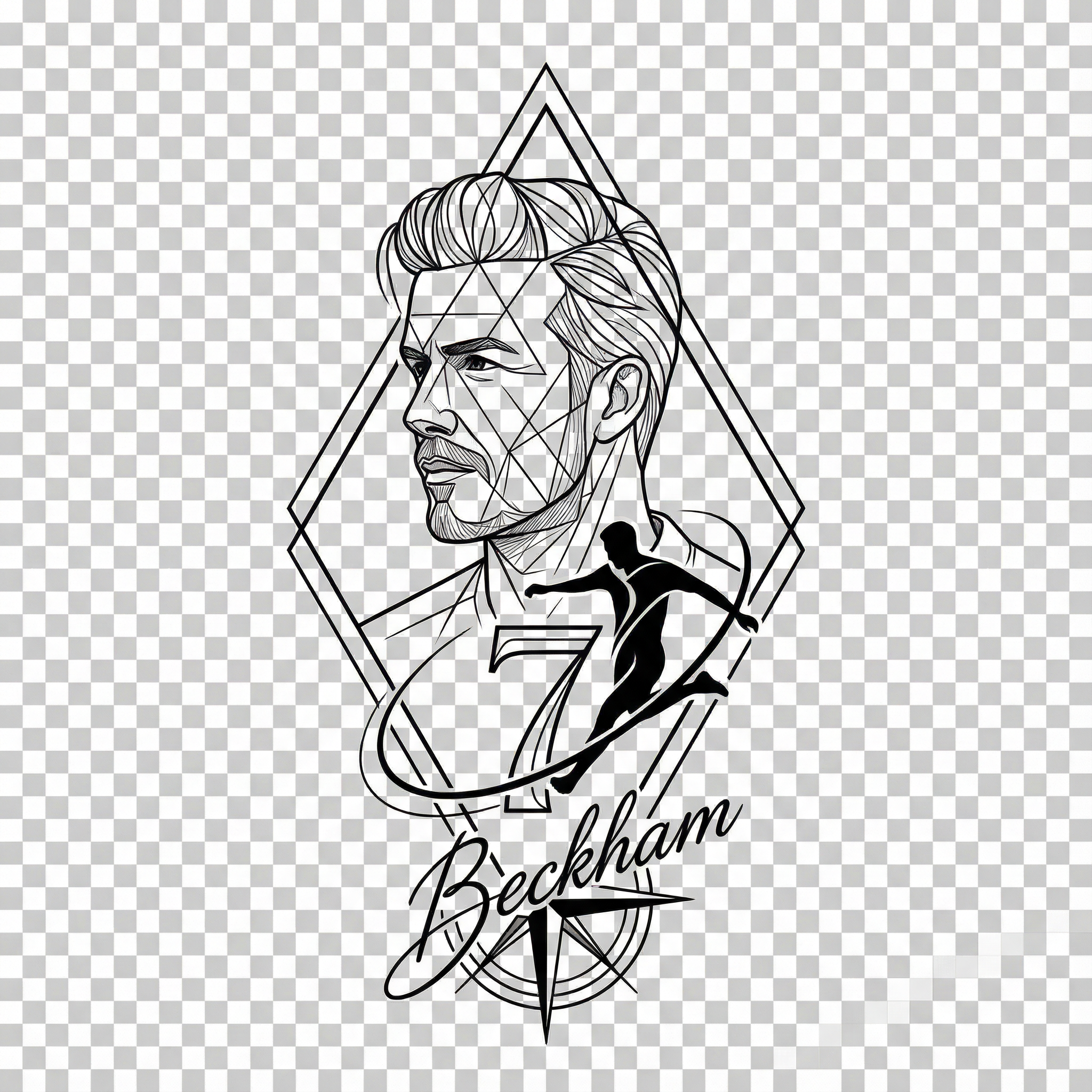Discover the Celebrity AI Voice Generator: Your Creative Guide
September 17, 2025
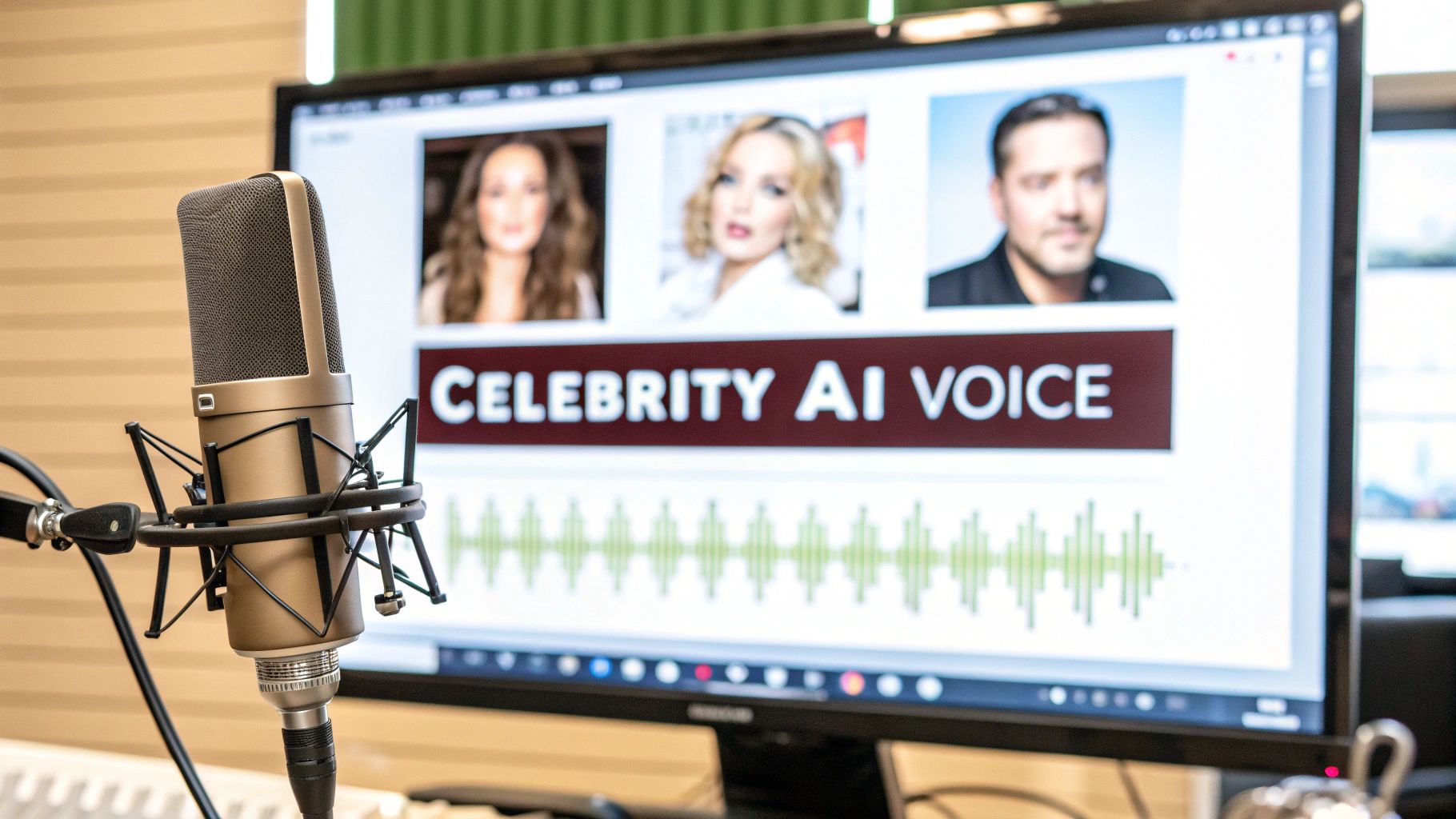
Ever wondered what it would be like to have your favorite movie star narrate your podcast or get GPS directions from a famous singer? That's the wild reality celebrity AI voice generators are bringing to life. This guide will walk you through how this technology works, its real-world applications, and the critical ethical rules you need to know.
Why This Topic Matters
The rise of celebrity AI voice generators is more than just a novelty; it represents a major shift in content creation, marketing, and entertainment. Understanding this technology is crucial for creators who want to innovate, businesses looking for a competitive edge, and consumers who need to distinguish between authentic and synthetic media. As these tools become more accessible, knowing how to use them responsibly is essential for navigating the future of digital identity and expression.
Step-by-Step Guide: How AI Recreates a Famous Voice
Ever wonder how a machine can perfectly capture the iconic, warm tone of a famous narrator or the energetic pitch of a pop star? It’s not magic; it’s a fascinating process that’s part art, part hardcore science. Think of an AI model as the world's most dedicated method actor, one that studies its subject for thousands of hours to nail every last detail.
Step 1: Data Collection
The journey starts with data—a massive amount of it. To create a celebrity AI voice generator, developers first need countless hours of clean, high-quality audio recordings from a single person. This could be anything from interviews and movie roles to public speeches and audiobook narrations. This huge audio library becomes the AI’s personal vocal coach.
Step 2: Deconstructing the Vocal Fingerprint
The engine driving this entire process is a technology called deep learning. This is a type of machine learning where artificial neural networks—modeled loosely on the human brain—sift through enormous datasets to find complex patterns. Essentially, we’re teaching a computer to "listen" and recognize vocal quirks just like we do, but on a superhuman scale.
The AI zeroes in on several key characteristics that make up a person's unique vocal signature:
Pitch and Intonation: This is the melody of a voice. The AI learns how a celebrity's voice rises when they ask a question or drops to make a point, perfectly capturing their emotional range.
Pacing and Rhythm: It studies the speed of their speech and their unique cadence. Some people talk in quick, punchy bursts; others have a more drawn-out, lyrical flow. The AI learns this rhythm.
Timbre and Tone: This is the unique texture that makes a voice distinct. It’s what gives one actor a warm, resonant quality and another a sharp, energetic delivery.
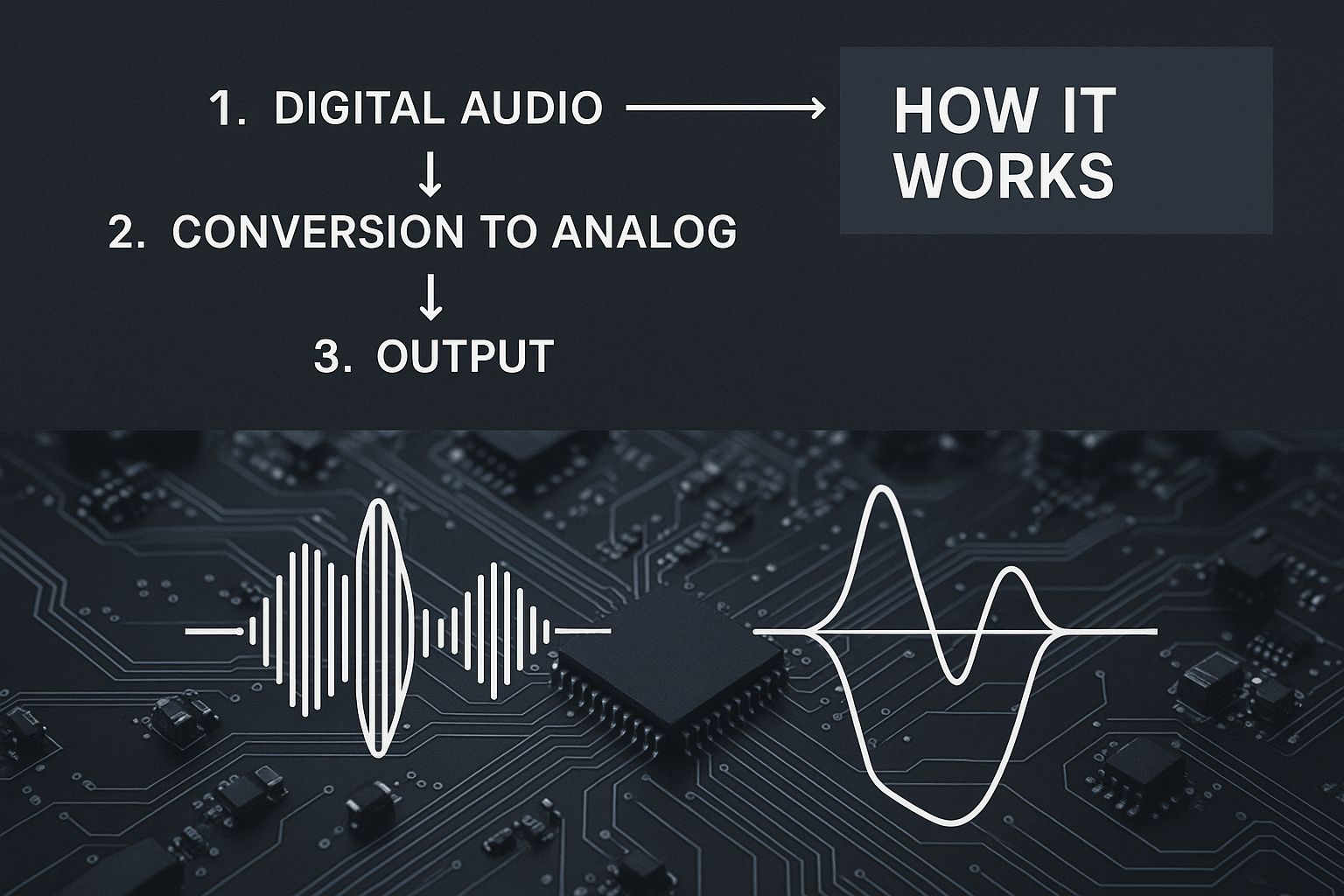
Step 3: From Data Points to Digital Performance
Once the AI has "learned" this vocal fingerprint, it builds a complex mathematical model. This model is essentially a detailed recipe for recreating the voice from scratch through a process known as Text-to-Speech (TTS) synthesis.
When you type a sentence into a generator, the AI breaks your text down into its most basic sound units, known as phonemes. The model then uses its deep understanding of the celebrity’s voice to generate these phonemes from the ground up, stitching them together flawlessly. It predicts exactly how that celebrity would pronounce each sound and transition between them, applying all the correct pitch, tone, and rhythm it learned from its training. For a deeper dive into the mechanics of learning, you can explore our educational resources at
https://www.soccerfieldmap.com/celebrity-voice-generator. The result is a completely new, original audio file that sounds astonishingly like the real person saying your words for the very first time.
Tips, Best Practices, and Common Mistakes
Using a celebrity AI voice generator feels powerful, but that power comes with some serious responsibility. It's tempting to just dive in, but blindly using these tools is a risky move. Navigating the legal and ethical maze is crucial for creating amazing things without stepping on a legal landmine.
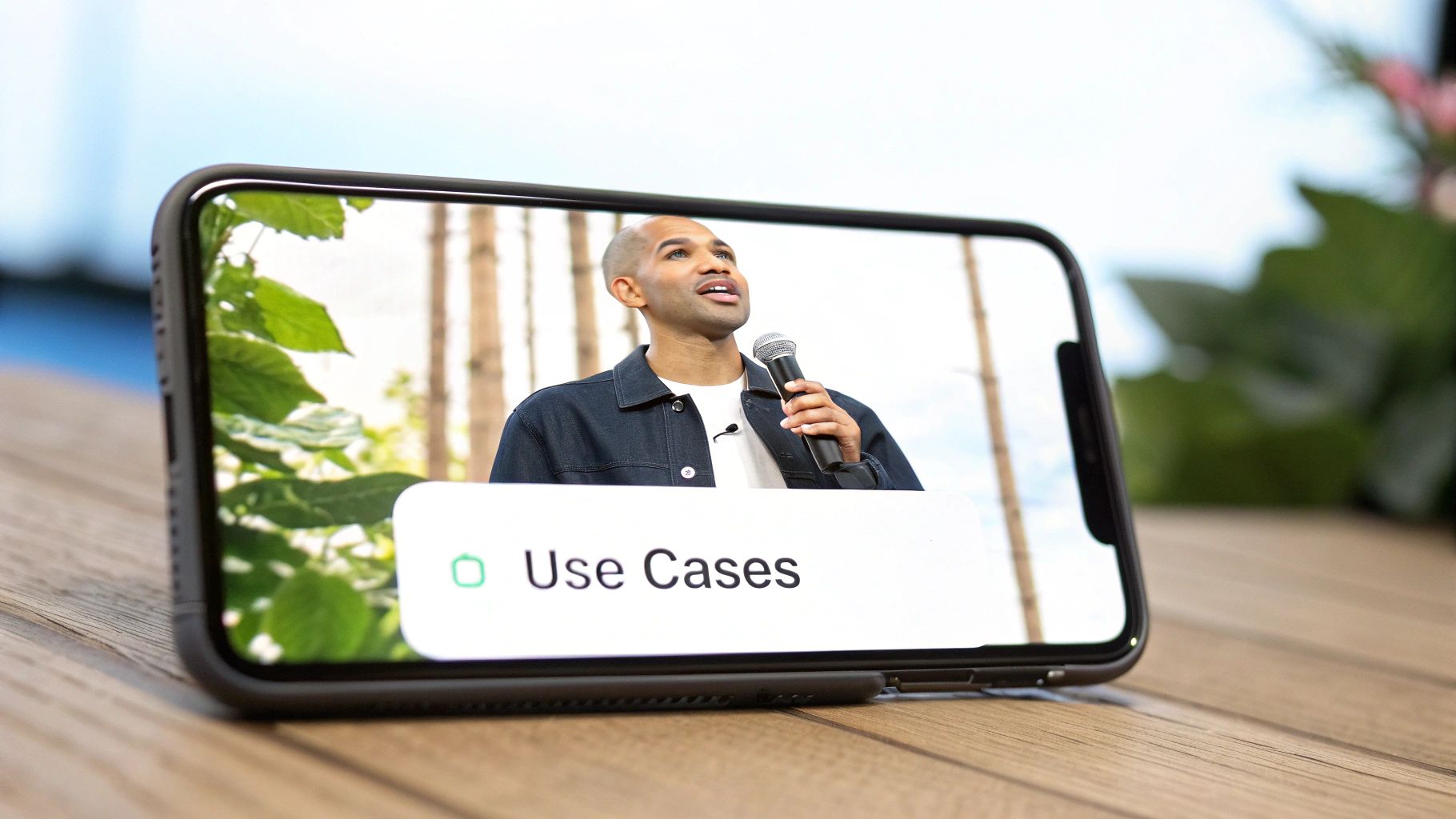
Best Practices for Ethical Use
Successfully navigating this maze comes down to one thing: respecting the person behind the voice. These aren't just sound waves; they're pieces of someone's identity. To make sure your projects are both innovative and responsible, just follow these essential guidelines.
Never Use for Commercial Endorsement: Don't use a celebrity's voice to endorse a product, service, or brand unless you have their explicit, written permission. This is the clearest and most frequently broken rule.
Clearly Label Parody and Satire: If you're creating satirical content, make it obvious. A simple disclaimer like "This is an AI-generated parody" provides crucial context and can be a legal lifesaver.
Prioritize Consent Above All: The safest, smartest, and most ethical path is to always use platforms that work directly with talent to get permission. This bakes consent into the process right from the start.
Common Mistakes to Avoid
Ignoring the Right of Publicity: A person's voice is a core part of their identity, and you simply can't use it for commercial gain without their permission. This is a legal principle that protects their name, likeness, and voice.
Creating Deepfakes and Misinformation: Using AI voices to create harmful content, like faking an endorsement for a scam or making a public figure say something inflammatory, is the absolute no-fly zone for ethical creation.
Assuming "Fair Use" is a Blanket Protection: While parody can be protected, "fair use" is a complex legal defense, not a free pass. Commercial use almost never qualifies.
Our commitment to user data and responsible practices is detailed in our privacy policy, which outlines how we handle information ethically.
Examples and Case Studies
Beyond the fascinating tech, the real magic of a celebrity AI voice generator is what you can do with it. This isn't some far-off concept anymore; it's a powerful tool being used right now across entertainment, marketing, and even accessibility to completely change how we create and listen to content.
Case Study 1: Revolutionizing Entertainment and Media
The entertainment world was one of the first to see the creative spark in AI-generated celebrity voices. For producers and developers, it’s a way to speed up production and pull audiences into more immersive experiences.
Video Game Development: Developers are using AI voices to quickly prototype character lines, stand in for actors who aren't available, or even generate entire vocal performances, saving a ton of time and money.
Film and Television Production: In moviemaking, AI is being used for "digital voice restoration" to clean up muffled dialogue or to finish an actor's performance if they're unable to complete a project—ethically and with their estate's permission, of course.
Case Study 2: Crafting Unforgettable Marketing Campaigns
In the cutthroat world of advertising, a celebrity AI voice generator gives marketers a secret weapon to create personalized, memorable ad campaigns. A brand could use its celebrity spokesperson’s AI voice to create thousands of unique audio ads that greet customers by name or mention their city. The AI voice generator software market, which powers these tools, was valued at USD 1.3 billion in 2024 and is expected to hit USD 5.68 billion by 2033. You can explore more of these market findings on businessresearchinsights.com.
Case Study 3: Enhancing Accessibility and Education
Beyond entertainment and marketing, celebrity AI voices have a profound use in making the world more accessible. For people with visual impairments or reading disabilities, having text read aloud in a warm, engaging, and familiar voice can make information much easier and more enjoyable to take in. For sports fans, it can even bring legendary moments to life, like generating commentary from an iconic player. We dig into how this works in our guide on the Messi AI voice generator.
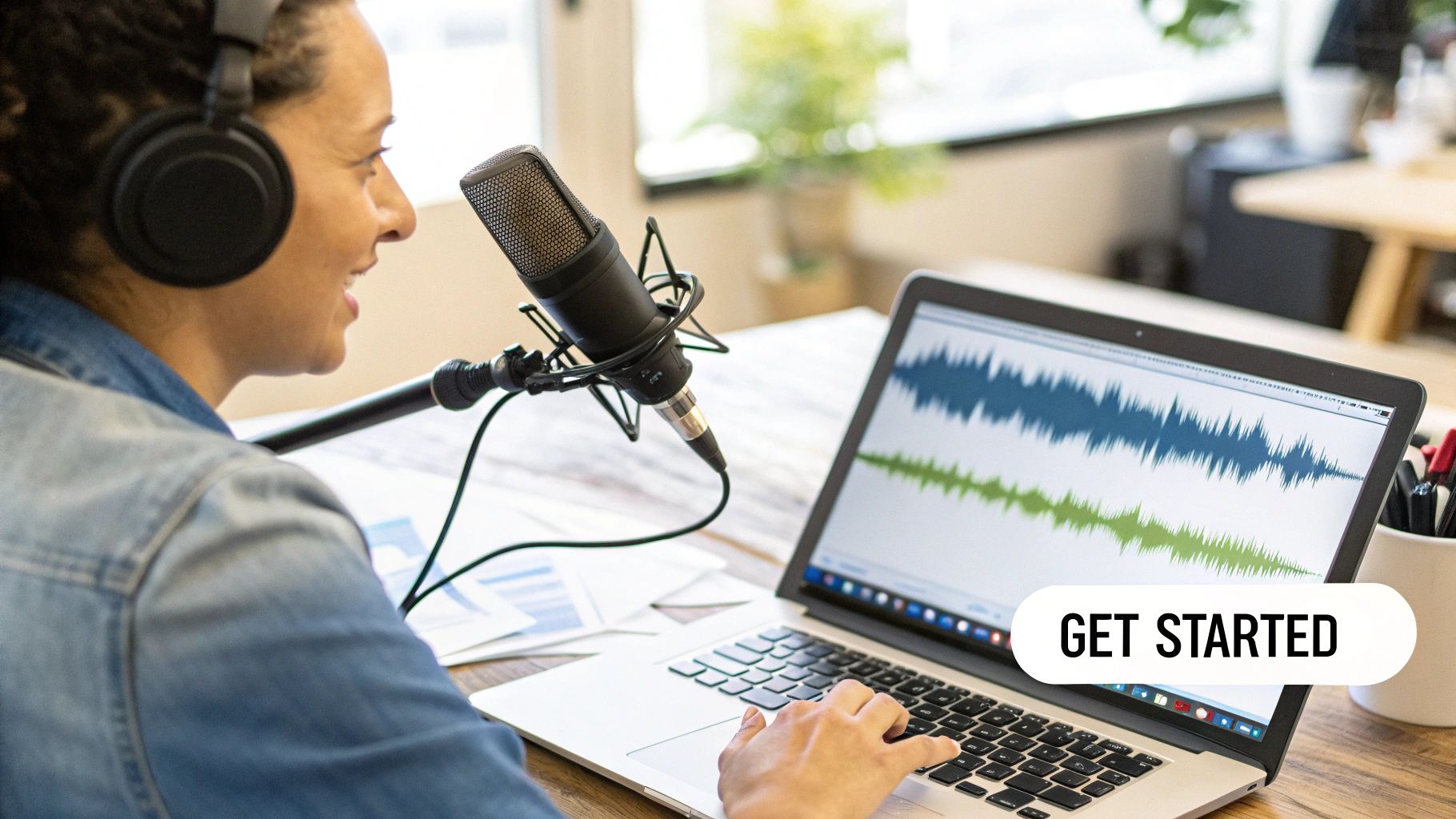
FAQ: Frequently Asked Questions
Jumping into the world of celebrity AI voices brings up a ton of questions. It's new, it's exciting, and it's totally normal to wonder about the details—from where the legal lines are drawn to how good the voices actually sound. We've pulled together the most common questions to give you clear, straight answers.
Is It Legal to Use a Celebrity AI Voice Generator?
This is the big one, and the answer really boils down to how you plan to use the voice. If you're thinking of using a celebrity's voice for anything commercial—like an ad, a sponsored post, or a monetized YouTube video—without getting their permission first, that's a hard no. It's illegal. This violates their "right of publicity," which protects their voice as a key part of their identity and brand. For personal, non-commercial projects like a parody, the rules are more gray, but the safest path is to always avoid public or commercial use without explicit permission.
How Can You Tell If a Voice Is AI?
It’s getting tougher to tell the difference between a top-tier AI voice and a real person, but there are still a few subtle giveaways. Listen for a slightly robotic or flat tone, weird pacing between words, a lack of genuine emotion, or the odd mispronunciation of a name or place. As the technology gets better, tools like audio watermarking and AI detection software will help platforms spot synthetic media more easily. If you run into any technical snags or have questions about a voice's authenticity, our team is ready to help in our support section.
What Is the Difference Between Voice Cloning and TTS?
Think of a standard Text-to-Speech (TTS) system as the generic voice you hear on your GPS. It gets the job done by converting text into a standard, synthetic voice, but it has zero personality. Voice cloning is a massive leap forward. It’s a specific type of TTS where an AI model is trained on audio recordings from one particular person. A celebrity AI voice generator is simply a voice cloning tool that's been trained on a famous person's voice to mimic their unique accent, pitch, and rhythm.
Conclusion
We’ve covered a lot of ground, from how celebrity AI voice generators work to their real-world uses and the thorny ethical questions they raise. This technology has incredible potential, but its future hinges on responsible and respectful innovation. As these tools become more integrated into our digital lives, our collective commitment to using them ethically will determine whether they become a force for creativity or a tool for misinformation. The road ahead is about striking a balance between creative freedom and a genuine respect for a person's identity.
Call to Action
Ready to create something amazing with an AI-powered tool that brings your favorite soccer stars to life? At Soccer Field Map, you can generate personalized AI videos featuring legends like Messi and Ronaldo. Bring the game to life and create your custom video today!
Related Content
AI Celebrity Content
More Blog Content
Community Video Collection
Browse amazing AI celebrity selfie videos created by our community. Click any video to explore the full gallery.
AI Celebrity Selfie with Soccer Star
Meet Ronaldo AI Selfie Generator
AI Selfie with Messi - Celebrity Video
Soccer Celebrity AI Selfie Example
AI Generated Celebrity Selfie Video
Meet Soccer Stars AI Selfie
AI Celebrity Photo Generator - Soccer Edition
Realistic AI Selfie with Celebrities
Create AI Selfies with Soccer Icons
Latest Soccer News
Create AI Videos with Soccer Celebrities: Messi, Ronaldo, Haaland & Alex Morgan 🎉
Perfect for birthdays, celebrations, and special shoutouts.
Try AI Celebrities(parody and personal use only!)
Try Other AI tools
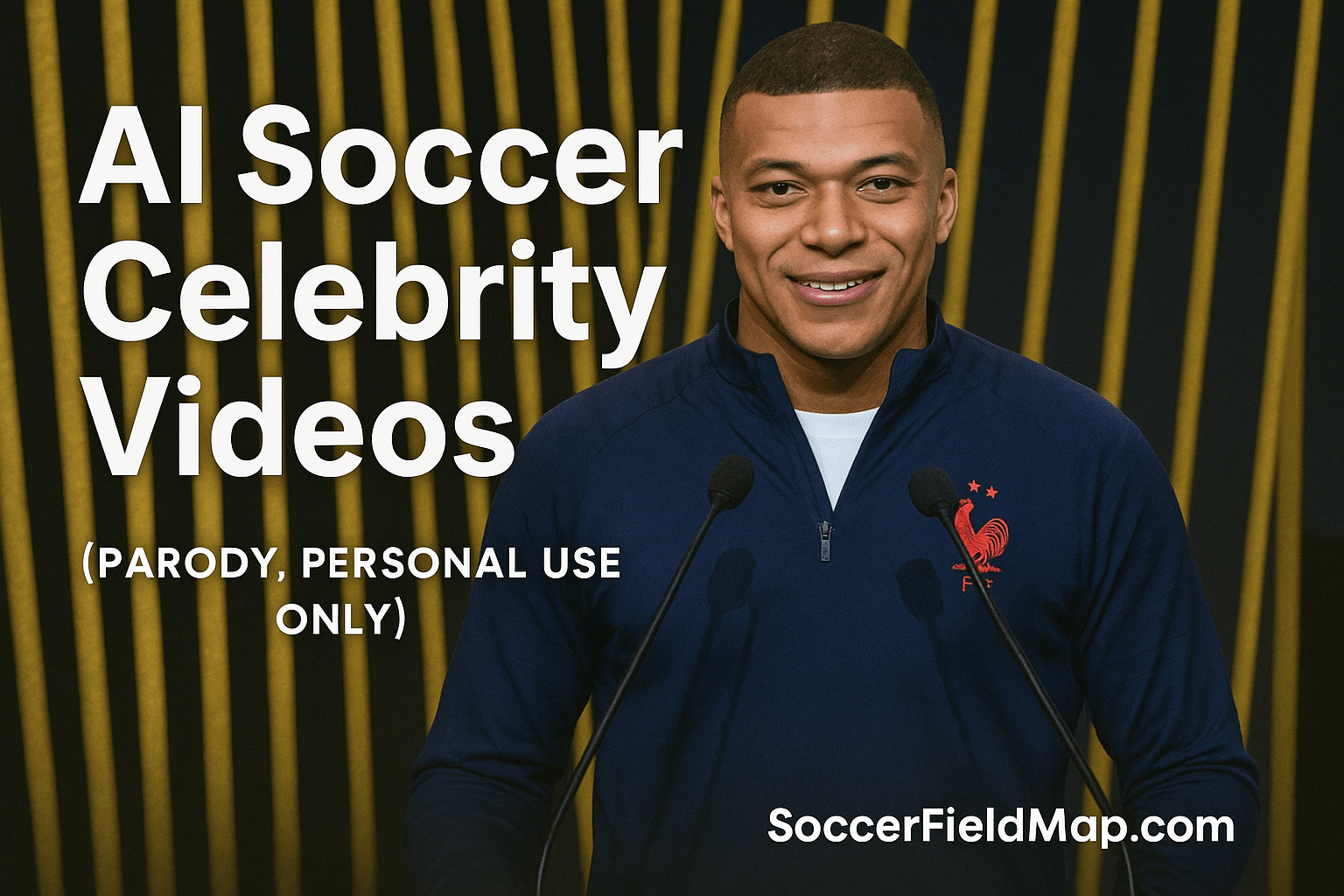
AI Soccer Stars Say It for You ⚽
Create personalized video messages from global soccer icons like Messi and Ronaldo. Perfect for birthdays, anniversaries, or any special moment. (Parody · Personal Use Only)
.png)
Send a Surprise from AI Messi ❤️
Imagine Lionel Messi delivering your message! Celebrate with a unique AI-generated video that makes every wish unforgettable. (Parody · Personal Use Only)
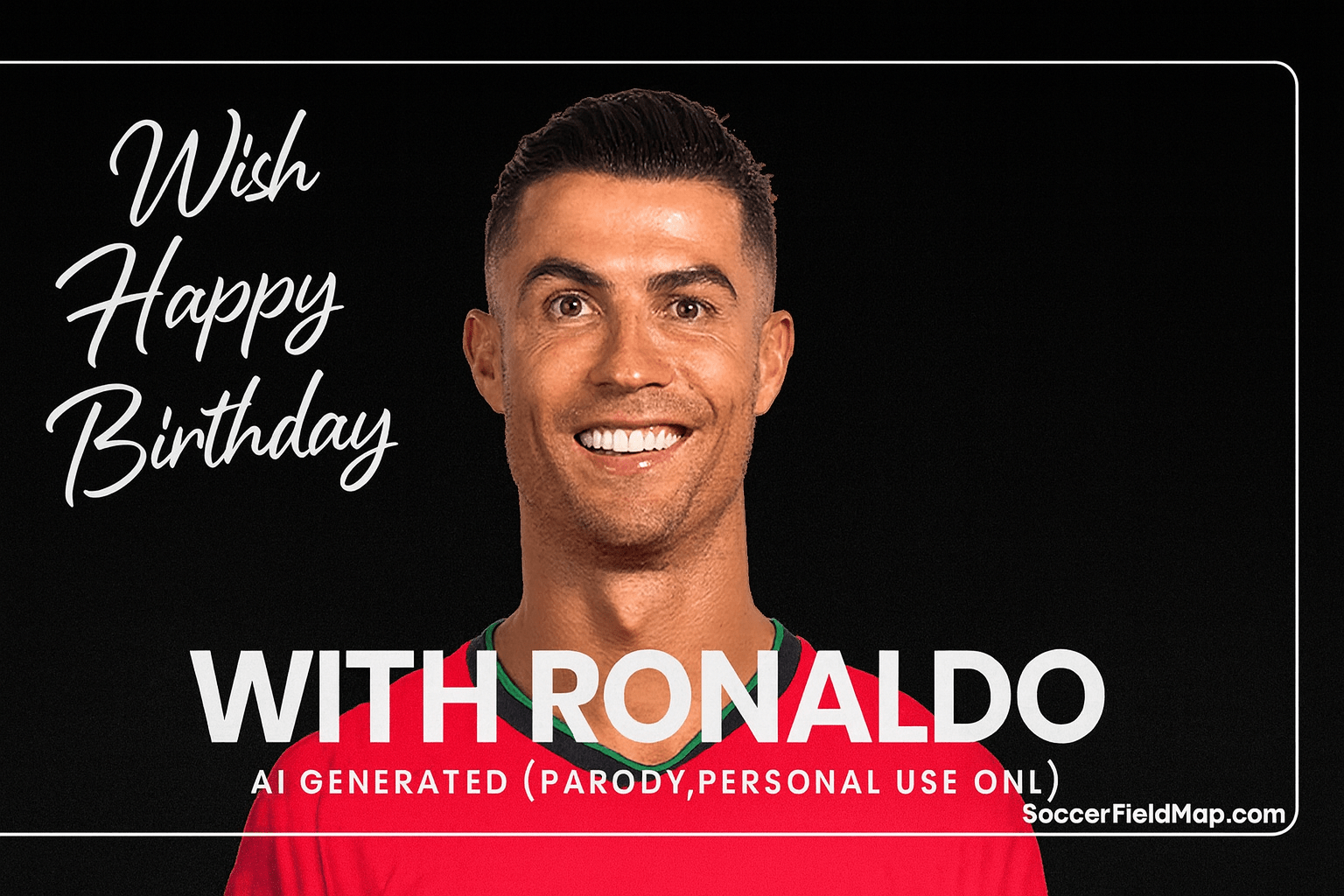
Wish Happy Birthday with AI Ronaldo 🎉
Give your friends and family the ultimate surprise — a birthday greeting from Cristiano Ronaldo himself, powered by AI. (Parody · Personal Use Only)



